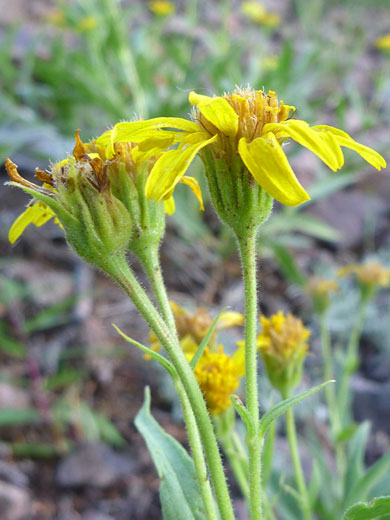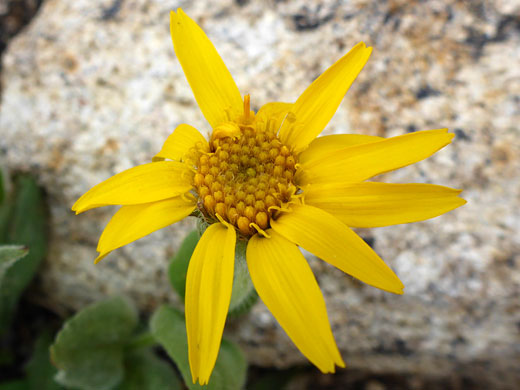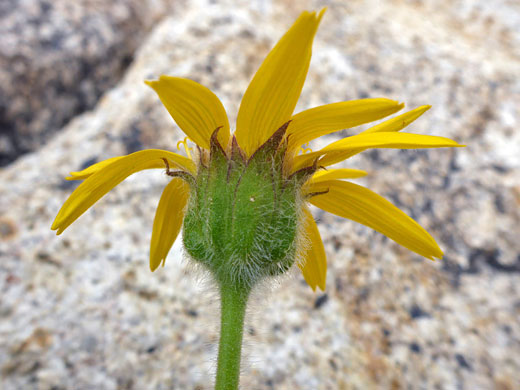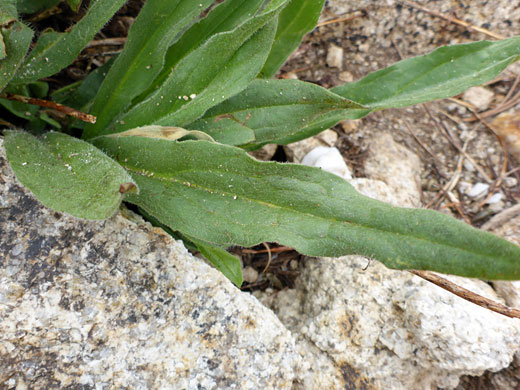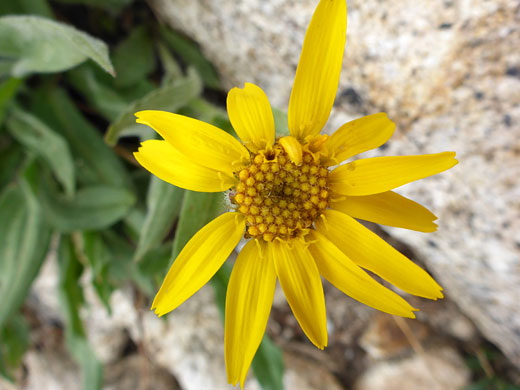Common names:
Longleaf arnica, spearleaf arnica, seep-spring arnica
Family:
Scientific name:
Arnica longifolia
Main flower color:
Range:
The northern Rocky Mountains, westwards to California, Oregon and Washington
Height:
Between 12 and 24 inches
Habitat:
Open conifer woodland, most meadows and hillsides; up to 11,500 feet
Leaves:
Lanceolate, entire, up to 4.5 inches long
Season:
July to August
Characteristic features of arnica longifolia are the long, untoothed leaves, the clustered stems and the pointed phyllaries. Leaves grow at the base but mostly along the stem, in opposite pairs - typically 5, 6 or 7, slightly more than for some similar species. They have one mid vein and two parallel side veins. The uppermost pair, or pairs, may be fused to the stem. Phyllaries, stems and the lower leaf surfaces are covered by short hairs, often glandular.
A single plant may produce up to 20 flowerheads, which have between 6 and 15 yellow ray florets, a little less than one inch in length, around a center of yellow disc florets, becoming brownish as they mature. The rays have two notches at the tip, and two lengthwise grooves. The corollas of the disc florets have a sparse hair covering, also glandular.
A single plant may produce up to 20 flowerheads, which have between 6 and 15 yellow ray florets, a little less than one inch in length, around a center of yellow disc florets, becoming brownish as they mature. The rays have two notches at the tip, and two lengthwise grooves. The corollas of the disc florets have a sparse hair covering, also glandular.
All Contents © Copyright The American Southwest | Comments and Questions | Contribute | Site Map


